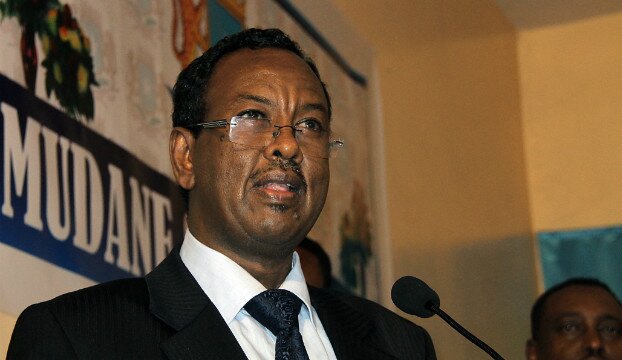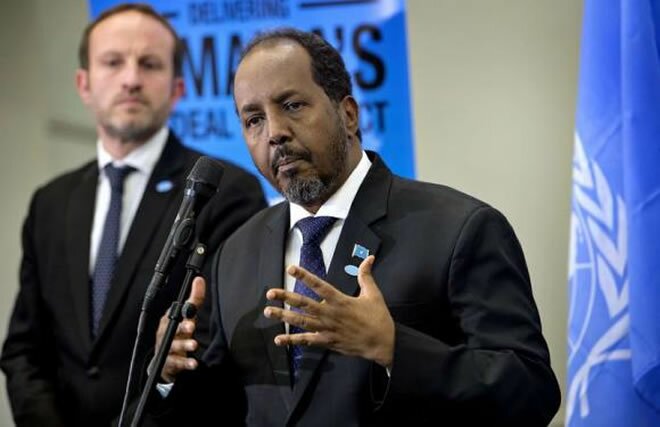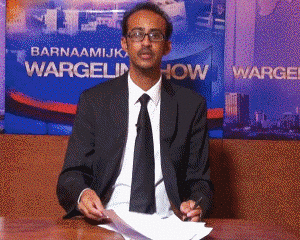High birth rate dims Kenya’s long-term growth prospects.
 Bartamaha (Nairobi):- The challenge facing Kenya in providing physical and social infrastructure became clear on Tuesday with the release of 2009 Census results showing that the country’s population is growing at a pace that is out of tune with its development goals.
Bartamaha (Nairobi):- The challenge facing Kenya in providing physical and social infrastructure became clear on Tuesday with the release of 2009 Census results showing that the country’s population is growing at a pace that is out of tune with its development goals.
Kenya is facing the grim reality of feeding additional one million mouths every year – translating to a population growth rate of 2.8 per cent above the global average of 2.1 per cent requiring the economy to grow at the rate of more than 12 per cent to remain in step with its development targets.
The Census results indicate that Kenya’s population now stands at 38.6 million placing huge hurdles on the country’s path towards the realisation of Vision 2030 – the development blueprint that aims to make Kenya an industrialised economy in 20 years.
Many analysts now agree that the realisation of that vision will largely depend on how fast the country moves to slow down the rate at which its population is growing mainly because of the pressure it exerts on the provision of public goods and services.
“We urgently need a strategy to contain the spiralling population to realise the Vision 2030,†said Mugo Kibati, the director at the Kenya Vision 2030 Secretariat. “This should be supported by initiatives to improve the quality of life where people have access to key services such as education and health,†said Mr Kibati.
The high rate of population growth has huge implications on government spending in infrastructure, health, education, environment, water and other social economic sectors.
Already, Kenya’s spending on these sectors takes more than half the national budget crowding out investment into sectors that can drive growth to the desired double digit level that is deemed necessary for the realisation of Vision 2030.
“Population growth is usually a positive indicator if managed well but an annual growth rate of more than two per cent poses immediate threat to government’s efforts to reduce poverty,†said Mr Zama Chi, the UNFPA’s Programme Officer in charge of the African Division.
Economists estimate that with a growth rate of 2.8 per cent Kenya’s economy needs to grow at neck-break speed of 13 per cent for a decade – with the three per cent catering for the new mouths — and the 10 per cent propelling the country towards the achievement of the Vision 2030 targets.
“To achieve the Vision 2030 goals critical investment will be required in family planning services, health and other social and economic sectors to improve the welfare of Kenyans,†said Wycliffe Oparanya, the Planning minister.
Of immediate concern, said Mr Oparanya, is investment in education to meet the demands of the growing school age population and the demand for manpower.
That assessment means that despite concerns that education is already taking up more than its fair share of national resources at Sh140 billion in the current fiscal year.
Census results showed that 14.1 million people were attending school last, another 14.2 million had left school at various levels and that 6.1 million had not attended school at all.
School attendance by those aged more than three years rose to a record 40 per cent last year, reversing a decline from 37 per cent in 1989 to 35 per cent a decade later.
Another 13.5 million Kenyans are pursuing studies at universities, secondary and primary school levels, raising the possibility of tax-payers being asked to pay more for increased allocation to the sector.
he statistics also imply that the problem of youth unemployment and biting poverty are likely to escalate unless measures such as Kazi kwa Vijana and an aggressive investments is made in segments of the economy with the highest potential of creating jobs.
“Population growth of this magnitude comes at a high cost to a developing country in terms of providing facilities for the younger population. This means the government must stimulate higher economic growth or stop providing some social programmes,†said Prof Joseph Kieyah, the head of private sector development division at Kenya Institute for Public Policy Research an Analysis.
Out of 32.7 million people aged five years and above only 15.8 million were employed while another 2.2 million were seeking employment.
Compared to 1999, the employed proportion grew only by 1.3 million while the inactive population grew at a faster pace from 8.1 million to 12.8 million.
That trend indicates that more people are depending on the few who are employed for a living and placing Kenya’s dependency ratio among the highest in the world.
“The secret is in boosting investment and job opportunities for Kenyans especially for the middle class thereby creating a multiplier effect that will spread to other levels,†said Samuel Nyandemo, an economist at the University of Nairobi.
Kenya will either have to tame her birth rates or cut down on its social budget that has been expanding in the last eight years to find some headroom for higher investment spending to realise its development goals.
“This data must be used immediately by economic planners and researchers as the basis for a new population policy for the country,†said Dr Boniface K’Oyugi, the chief executive officer of the National Coordinating Agency for Population and Development
Prof Kieyah linked high economic growth in the West with lower birth rates but warned the government to tread carefully in rolling out family planning campaigns saying it could stir negative passions among a section of the population.
Some analysts, however, maintained that said the high population growth could be harnessed to benefit the economy.
“The way out is to tap the thousands of skilled workforce and export both to the region and the diaspora,†said Patrick Obath, the chairman of the Kenya Private Sector Alliance (Kepsa).
“If our economy cannot fully absorb these people, other nations have a shortage of key skills which we can take advantage of and boost remittances,†he added.  said Mr Obath.
Mr Kuria Muchiru, the Kenya country leader and senior partner at PricewaterhouseCoopers said Kenya could tap into the ICT sector to create jobs in the business process outsourcing sector.
“Its now clear that the youth bulge is increasingly becoming a concern. Kenya must thus re-look at where best it can spend,†said Mr Muchiru.
—————————
Source:- Business Daily Africa.
Comments
comments
 Calendar
Calendar




































